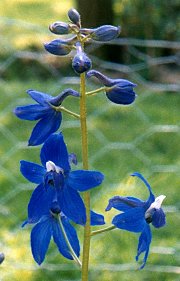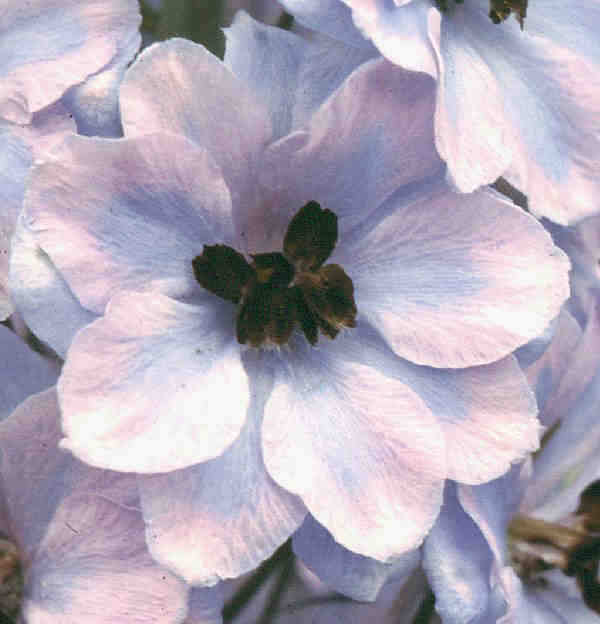 The wild delphinium species,
D. trolliifolium, that grows near the Columbia river
in Oregon and Washington State illustrates these features
very well. There are five blue sepals, one with a long
spur.
The wild delphinium species,
D. trolliifolium, that grows near the Columbia river
in Oregon and Washington State illustrates these features
very well. There are five blue sepals, one with a long
spur. The top pair of petals are white with nectaries in their spurs. The lower pair of petals are blue and these are sometimes called 'honey leaves'. This plant had the prettiest flowers in a batch of seedlings and has particularly broad sepals and pure blue colour.
 For a garden delphinium we like
the sepals to be large and the eye to make a good
contrast to the sepals, as in this named delphinium
'Oliver'.
For a garden delphinium we like
the sepals to be large and the eye to make a good
contrast to the sepals, as in this named delphinium
'Oliver'.